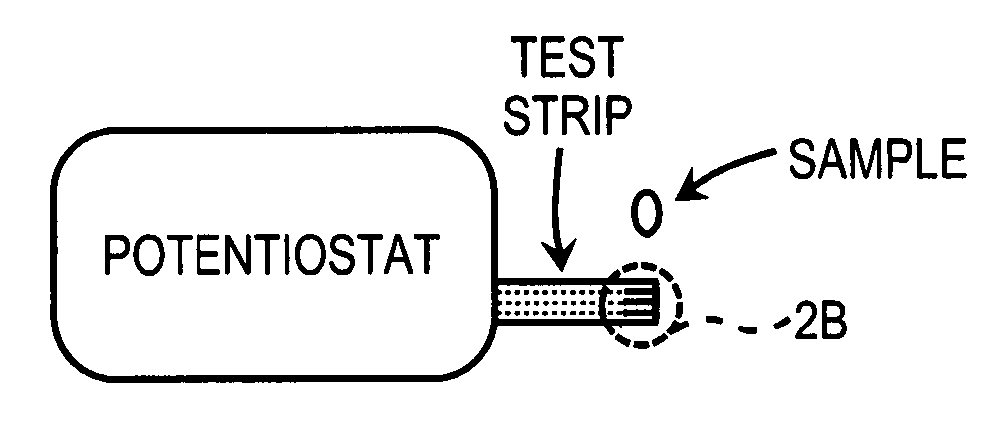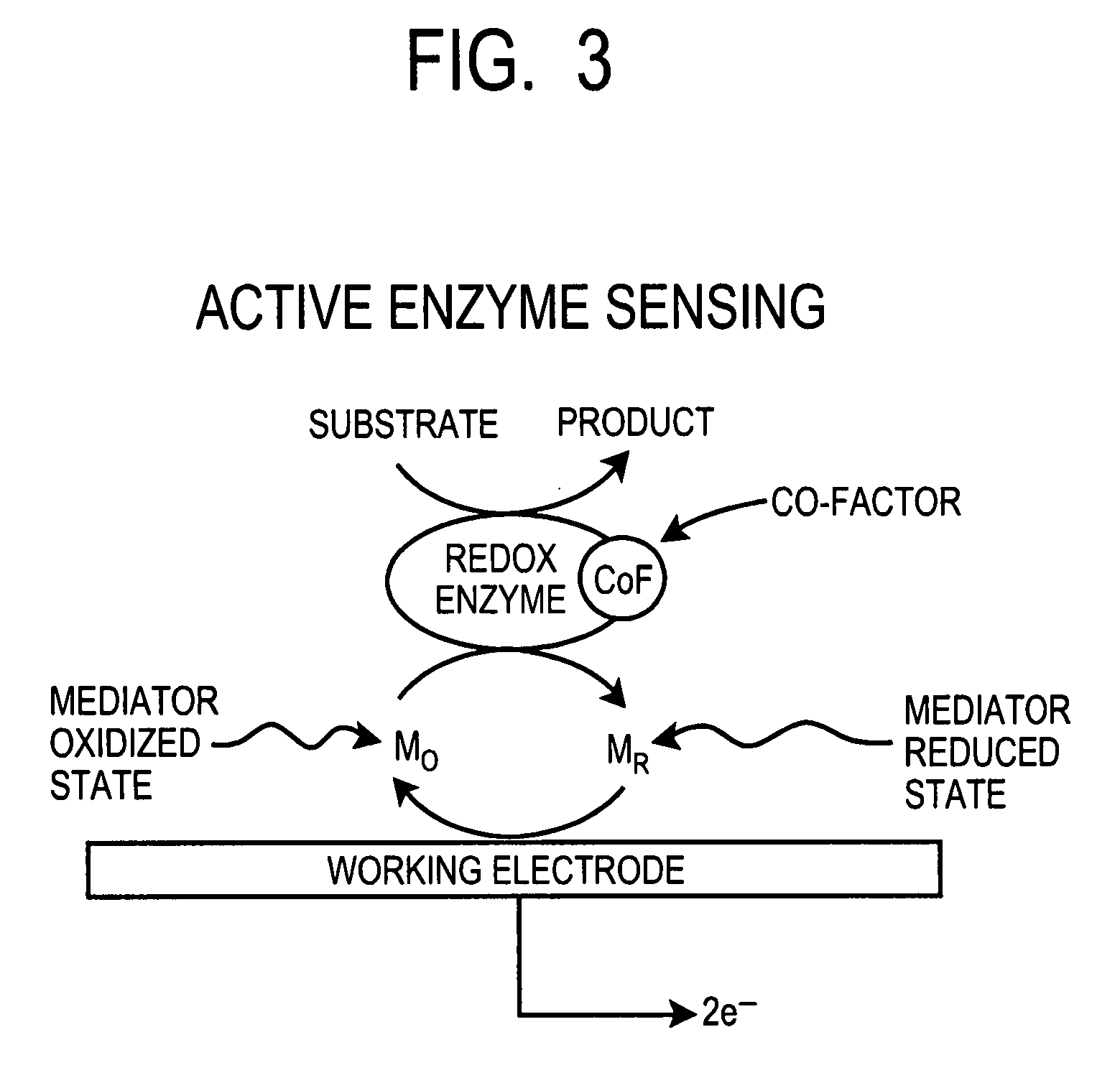Methods and devices for the detection and measurement of free metals in fluids and methods for diagnosing metal-related diseases and for determining pharmacologic dosing regimens
a technology of free metals and fluids, applied in the direction of liquid/fluent solid measurement, enzymology, biomass after-treatment, etc., can solve the problems of high accuracy of estimation, increased copper levels, and many patients suffering from severe neurologic sequelae or death. , to achieve the effect of low cos
- Summary
- Abstract
- Description
- Claims
- Application Information
AI Technical Summary
Benefits of technology
Problems solved by technology
Method used
Image
Examples
Embodiment Construction
[0050] Squitti and researchers have demonstrated that “Free Copper” tracks with the Mini Mental Status Exam (MMSE) in Alzheimer's Disease. Historically Free Copper has been measured using methods that are less than direct.
[0051] To test the hypothesis that an apo-enzyme can be used to measure free copper in a blood sample, we performed the following experiment. Magnetic beads derivatized with epoxide were mixed with Tyrosinase which resulted in the coupling of Tyrosinase to the magnetic bead. apo-Tyrosinase coupled to magnetic beads was prepared using incubation and washing four times with the copper chelator sulfobathocuprione. apo-Tyrosinase magnetic beads were then incubated with serum an then washed extensively. In this way, apo-enzyme was converted to holo-enzyme from the free copper dissolved in serum. The amount of free copper dissolved in serum will be proportional to the amount of holo-enzyme generated. A standard curved was then generated based on a colorimetric assay of ...
PUM
| Property | Measurement | Unit |
|---|---|---|
| concentrations | aaaaa | aaaaa |
| electrochemical detection | aaaaa | aaaaa |
| three electrode electrochemical detection | aaaaa | aaaaa |
Abstract
Description
Claims
Application Information
 Login to View More
Login to View More - R&D
- Intellectual Property
- Life Sciences
- Materials
- Tech Scout
- Unparalleled Data Quality
- Higher Quality Content
- 60% Fewer Hallucinations
Browse by: Latest US Patents, China's latest patents, Technical Efficacy Thesaurus, Application Domain, Technology Topic, Popular Technical Reports.
© 2025 PatSnap. All rights reserved.Legal|Privacy policy|Modern Slavery Act Transparency Statement|Sitemap|About US| Contact US: help@patsnap.com



